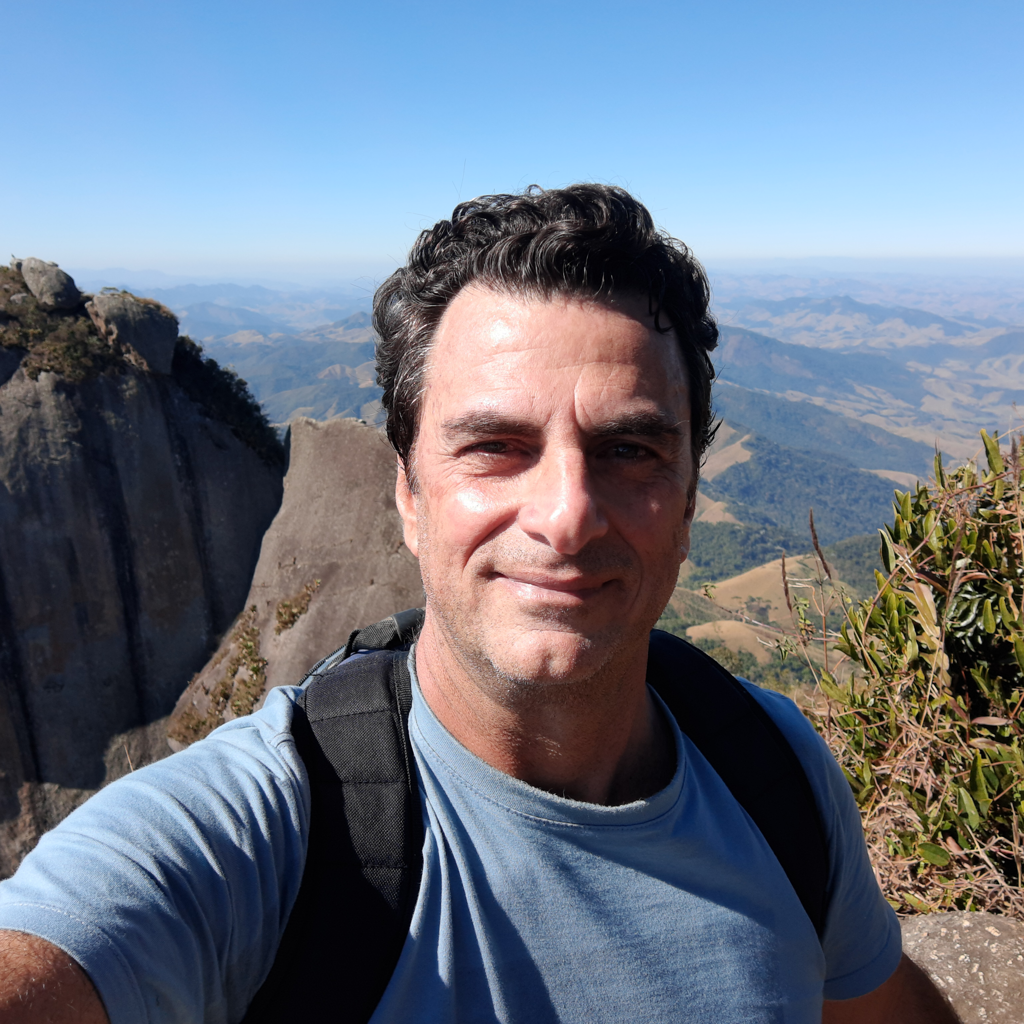Antonio Zelaquett Khoury
Universidade Federal Fluminense, BrazilFor ground-breaking work on structured quantum light and applications to classical optics of quantum information concepts including state non-separability.

Antonio Zelaquett Khoury vividly remembers the year he discovered physics. He was 13 years old and wondered into how many pieces he could break a piece of glass. His brother, who was studying engineering at the university, told him about the atom. Antonio’s parents bought a new encyclopedia, and he read voraciously on the subject. He was hooked! He eagerly returned to his brother and asked how he could study that for the rest of his life. The answer? Physics.
Despite his passion for physics research, he worried about the uncertainty of the job market. He identified that math was an essential part of physics, and he thought this avenue would offer more job security. He started to pursue computer science in the early 1990s. At that time, he enjoyed the work because he used math every day. However, he soon felt unfulfilled and unmotivated to continue, and he shares, “I took some time to realize that I needed to work with passion: that I would not be able to follow a career only for economic reasons.”
Committing to physics was not the only turning point in Antonio’s career. He shares three significant shifts, all tied to wonderfully supportive mentors who helped guide him to where he is today. First, upon completion of his PhD at the Pontifical Catholic University of Rio de Janeiro, he moved 3,000 kilometers to Pernambuco Federal University to do a postdoc with Prof. José-Roberto Rios-Leite at Recife. This physical move was also a transition research-wise: from theoretical quantum optics to experimental nonlinear optics. He comments, “It was a true revolution in my mind…this period was very enlightening and determined the kind of researcher I eventually became, at the intersection of experimental and theoretical work.”
The next move was to Laboratoire Kastler Brossel in Paris, where he did a second postdoc under Prof. Elisabeth Giacobino. While there, Claude Cohen-Tannoudji won the Nobel Prize, and there was tremendous excitement in the air. Additionally, Serge Haroche was doing the work that would lead to his Nobel Prize a decade later. Elisabeth is a venerable scientist herself, and Antonio comments, “Elisabeth moves very fast…you have to move; otherwise, you stay behind.” Being exposed to this environment was particularly inspiring, and once he relaxed into the rhythm of the research, he was able to grow and contribute.
Finally, he returned to Brazil and started his current position at Universidade Federal Fluminense (UFF), Brazil. Antonio maintained contact with his PhD advisor, Luiz Davidovich, who led a national project on quantum information science devoted to financing the research in this field. Luiz helped Antonio set up and fund the Quantum Optics Laboratory at UFF. At last an independent researcher, he started down the path he continues following today, incorporating lessons from each of his mentors into his enthusiastic leadership.
His research is devoted to the compelling properties of light and their application to quantum and classical optical devices. In 2006, the group made a significant contribution to the field. He explains, “Our discovery was first related to the formal equivalence between nonuniformly polarized beams (also known as vector beams) and quantum entangled states. The mathematical equivalence between these objects inspired the translation of several quantum information concepts to the classical optical domain. This first discovery led us to a second important contribution, which was the demonstration that this quantum-classical connection opens interesting possibilities in nonlinear optics. We showed the crosstalk between different light properties in nonlinear processes, which can be useful for new optical devices.” Today, his group is embarking on a major project to establish a quantum network in the metropolitan area of Rio de Janeiro. The goal is to connect UFF with the Brazilian Center of Physics Research (CBPF) with a free-space link and two other labs in the Rio de Janeiro area with fiber links.
Antonio is grateful for the opportunities he’s found through Optica and the optics and photonics community. When he started his current research endeavors, the physics community had mixed reactions. However, the optics community was much more open-minded. He was able to publish in Optica’s journals, which validated the work in the eyes of the greater physics community. He shares, “some of our most cited works are in [Optica’s journals].” Recently, he became a topical editor for Optics Letters, and he is proud of the way he’s able to give back. He’s also enthusiastic about the recent re-branding to Optica. He says, “the name gives a more international character to the society, and I think [it] was very well done.”
Photo Credit: Antonio Zelaquett Khoury
Profile written by Samantha Hornback
